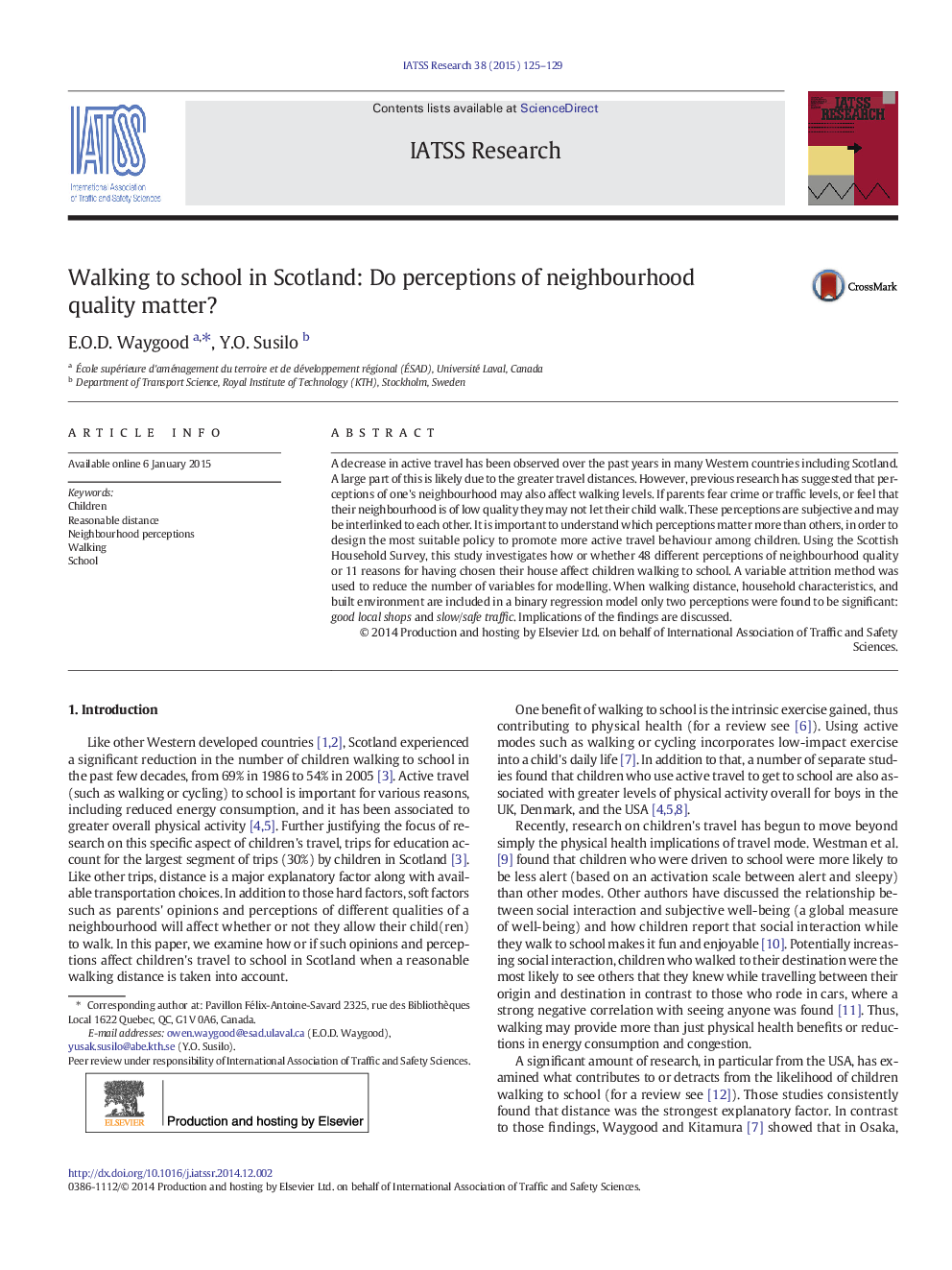| Article ID | Journal | Published Year | Pages | File Type |
|---|---|---|---|---|
| 1104674 | IATSS Research | 2015 | 5 Pages |
•Influences on children walking to school in Scotland•Measures of parents' opinions and perceptions on neighbourhood qualities•Reasonable or threshold distance for children walking•Perception of “good local shops” positively associated to walking•Perception of “slow/safe traffic” negatively associated to walking
A decrease in active travel has been observed over the past years in many Western countries including Scotland. A large part of this is likely due to the greater travel distances. However, previous research has suggested that perceptions of one's neighbourhood may also affect walking levels. If parents fear crime or traffic levels, or feel that their neighbourhood is of low quality they may not let their child walk. These perceptions are subjective and may be interlinked to each other. It is important to understand which perceptions matter more than others, in order to design the most suitable policy to promote more active travel behaviour among children. Using the Scottish Household Survey, this study investigates how or whether 48 different perceptions of neighbourhood quality or 11 reasons for having chosen their house affect children walking to school. A variable attrition method was used to reduce the number of variables for modelling. When walking distance, household characteristics, and built environment are included in a binary regression model only two perceptions were found to be significant: good local shops and slow/safe traffic. Implications of the findings are discussed.
